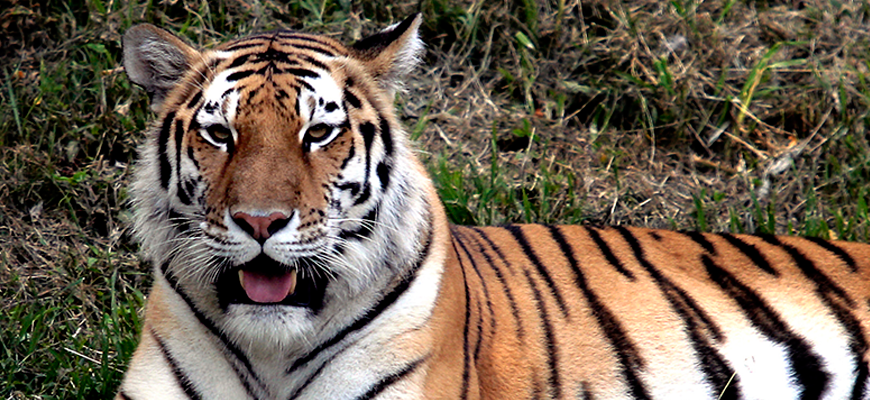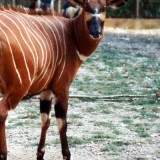RANGE
Amur River region in eastern Russia, northeastern China and into the Korean peninsula.
HABITAT
Prefer forested areas or open lands.
SIZE
Largest living feline
Males: 400 – 600 pounds on average and up to 14 ft. long
Females: Average 250 – 300 pounds
REPRODUCTION
- Cubs born in litters of 2 – 4, but have a high mortality rate.
- Gestation is 15 – 16 weeks.
- Cubs consume only mother’s milk for first 8 weeks, but continue to suckle for up to 6 months. Young begin accompanying mother on hunts at 6 months and begin hunting alone at about 11 months.
- Cubs stay with mother for 2 – 3 years.
- Young are born with same markings as adults.
- Sexual maturity: Males: in 4 – 5 years. Females: 3 – 4 years.
- Litters are born every second or third year.
DIET
Wild: musk ox, wild pig, axis deer, deer, antelope, monkeys, birds, fish and reptiles.
Zoo: feline diet, 8 – 12 pounds per day, but are fasted twice a week.
BEHAVIOR
- Usually live and hunt alone except when mating, but there are exceptions.
- When cubs reach maturity, they are forced to find new hunting areas. Although they do not live in large groups or packs, tigers have been observed exhibiting social behavior with one another.
- Males mark territories by spraying, defecating, and leaving scratch marks. Males generally will not allow another male in the vicinity, but will allow an intruder to pass through undisturbed.
- Females also mark territory by urinating, but do not defend it.
- They hunt after dark, approaching prey unnoticed from dense cover.
- Average adult makes 30 kills in a year, may gorge on up to 50 pounds of meat in a night.
POINTS OF INTEREST
- Reasons for endangerment include the following: trophy hunting, poaching, pelts, carcass for medicinal purposes, danger to man and domestic stock, habitat destruction. Hunted largely for their bones and other body parts, which are ground up and sold in east Asia as folk medicines for $1000 a pound or more. A poacher can make $10,000 from one tiger.
- All felidae are distinguished by a round head, 30 teeth, digitigrade (walking on toes) feet with retractile claws (except the cheetah).
- Can not climb well, but are good swimmers.
STATUS
Endangered. Only about 150 in captivity in AZA accredited zoos. Less than 400 left in the wild. Is part of an SSP plan. Last count from a census released by World Wildlife Fund, represents a 72 % increase over 250 Amur Tigers found in the area in the last census taken in 1985 in far eastern Russia. Stringent governmental policies imposed under international pressure have helped. Beijing reported in 1994 that its population had soared to almost 100, a threefold increase from 30 in a 4-year period in N.E. China. So vigorously did the Chinese authorities enforce their policies that in 1994 they executed a farmer for killing a tiger in a zoo and stealing its carcass.
REFERENCES
Associated Press, Nov. 23, 1996






